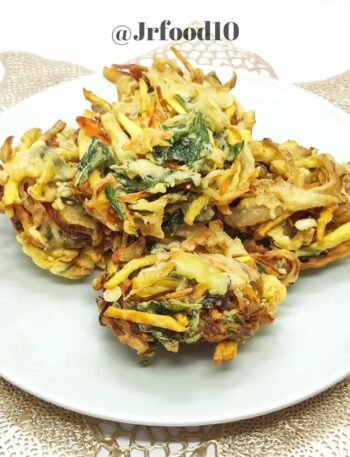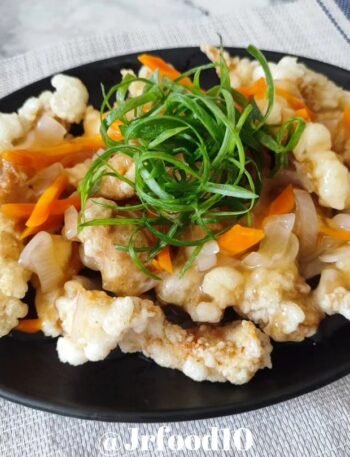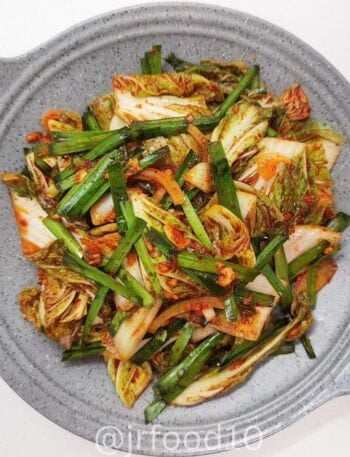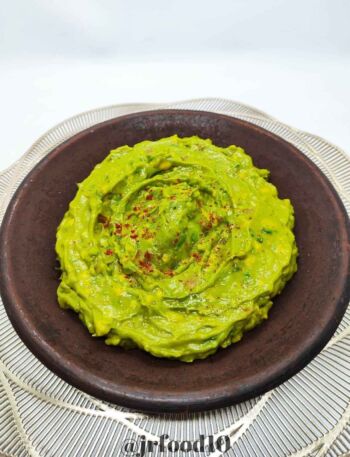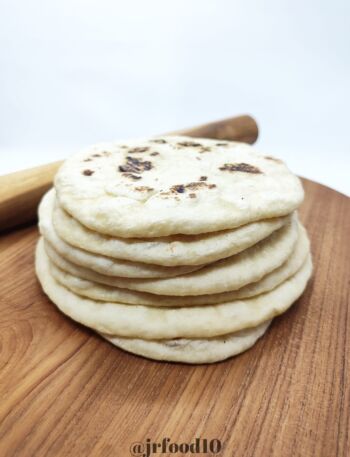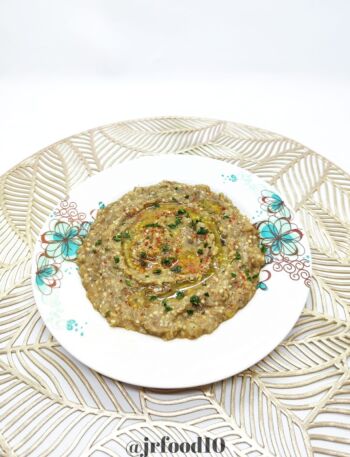How to Make Kimchi – Best Recipes

Today, we’re not just entering the kitchen – we’re stepping into a world where cabbage becomes a canvas, and spice is the paintbrush. Welcome to the Kimchi Chronicles, where we’re about to spill the spicy secrets on “How to Make Kimchi” and turn your taste buds into bona fide thrill-seekers!
Imagine this: your kitchen transforming into a flavor carnival, complete with confetti of chili flakes and a parade of vibrant veggies. Making kimchi isn’t just a cooking venture; it’s an exhilarating plunge into a world where every crunch, every kick of heat, tells a story of culinary rebellion.
Why Kimchi, You Wonder?
Because kimchi is not your grandma’s pickle jar. It’s a funky, fresh, and fabulous sidekick that refuses to play by the rules. If your taste buds are tired of snoozing through the same old meals, learning how to make kimchi is like waking them up with a flavor fireworks display.
Get ready for a ride, where Napa cabbage transforms into a spicy superhero, garlic and chili flakes join forces, and your kitchen becomes the epicenter of a flavorquake. This “Kimchi Recipes” escapade is your passport to culinary rebellion – no bland bites allowed!
So, who’s up for a flavor revolution? Grab your apron, summon your inner spice warrior, and let’s embark on a kimchi-making escapade that will have your taste buds singing, dancing, and maybe even doing the cha-cha. Get ready to redefine flavor – Kimchi-style!
Let the culinary exploration begin! Find recipes that will make your taste buds do the happy dance:
How to Make Kimchi – Best Recipes
Imagine a symphony of crisp crunchiness from Napa cabbage, the lively tang of fermented veggies, and a playful heat that pirouettes on your palate, as every bite of homemade kimchi unfolds into a flavor extravaganza that's bold, zesty, and utterly addictive.

Ingredients
Instructions
Start by thoroughly washing and cutting the Napa cabbage into quarters or bite sized. Sprinkle salt between the leaves, ensuring each piece is adequately coated. Allow the cabbage to rest for about 2 hours. This step helps draw out excess water, setting the stage for the perfect kimchi texture.
In a blender, combine the apple, dried shrimp, garlic, onion and fish sauce. Blend until you achieve a smooth paste.
Cut the chives into small pieces and juliene for the carrot. Set aside.
Now add the rice flour and sugar into a pan and add enough water cook it till its become slighlty sticky mixture.
Mix the gochugaru into the rice flour paste and the onion paste. Now add the chives and carrot into the mixture.
After the cabbage has absorbed the salt and developed a slightly wilted appearance, rinse it thoroughly and drain excess water. Take each cabbage quarter and generously coat it with the spicy paste, making sure to get the mixture between each leaf.
Place the coated cabbage quarters in an airtight container, pressing down firmly to remove any air pockets. Seal the container and let the magic of fermentation begin. Allow your kimchi to ferment at room temperature for about 24-48 hours, depending on your desired level of fermentation.
After the initial fermentation period, taste your kimchi. If it has reached the desired balance of flavors, move it to the refrigerator to slow down the fermentation process. If not, let it continue fermenting until it reaches your preferred taste.
Servings 10
- Amount Per Serving
- Calories 175kcal
- % Daily Value *
- Total Fat 2.3g4%
- Saturated Fat 0.4g2%
- Sodium 6085.99mg254%
- Potassium 700mg20%
- Total Carbohydrate 36.9g13%
- Dietary Fiber 6.4g26%
- Sugars 10.69g
- Protein 7.4g15%
- Calcium 212 mg
- Iron 3 mg
* The % Daily Value (DV) tells you how much a nutrient in a food serving contributes to a daily diet. 2,000 calorie a day is used for general nutrition advice.
Note
- Wear disposable gloves to protect your hands from the heat of the gochugaru.
- Keep your utensils, containers, and hands impeccably clean throughout the process. This helps prevent unwanted bacteria from interfering with the fermentation process.
- Once your kimchi reaches the desired level of fermentation, transfer it to the refrigerator to slow down the process. Use airtight containers to prevent the strong aroma of kimchi from permeating other foods.
- Don't be alarmed if your kimchi develops a strong smell during fermentation. This is normal and indicates the development of complex flavors. The aroma will mellow out once refrigerated.
Frequently Asked Questions
While Napa cabbage is the traditional choice for kimchi, you can experiment with regular cabbage or even bok choy. Keep in mind that the texture and taste may vary slightly.
Absolutely. You can substitute fish sauce with soy sauce or tamari for a vegetarian or vegan version of kimchi. The taste will be different, but it can still be delicious.
If your kimchi turns out saltier than desired, try rinsing the cabbage more thoroughly after the salting step. Additionally, you can balance the flavors by adding a bit more sugar during the paste-making stage.
The fermentation time can vary based on factors like room temperature and personal taste preferences. Generally, 24-48 hours at room temperature is a good starting point. Taste your kimchi during this period and move it to the refrigerator when it reaches your desired flavor.
Yes, you can use a plastic container for the initial fermentation, but make sure it's food-grade and doesn't contain harmful chemicals. When transferring to the refrigerator for storage, glass containers are often preferred to prevent any potential absorption of odors.
Properly stored kimchi can last for several weeks to months in the refrigerator. The flavors will continue to develop, and the kimchi may become more tangy over time.
Yes, a strong aroma during fermentation is normal. This indicates the development of complex flavors. Once refrigerated, the smell will mellow out.
While you can freeze kimchi, the texture may change, and it might become less crisp. Freezing is not the traditional storage method, but it can be done if you have a surplus and want to extend its shelf life.


